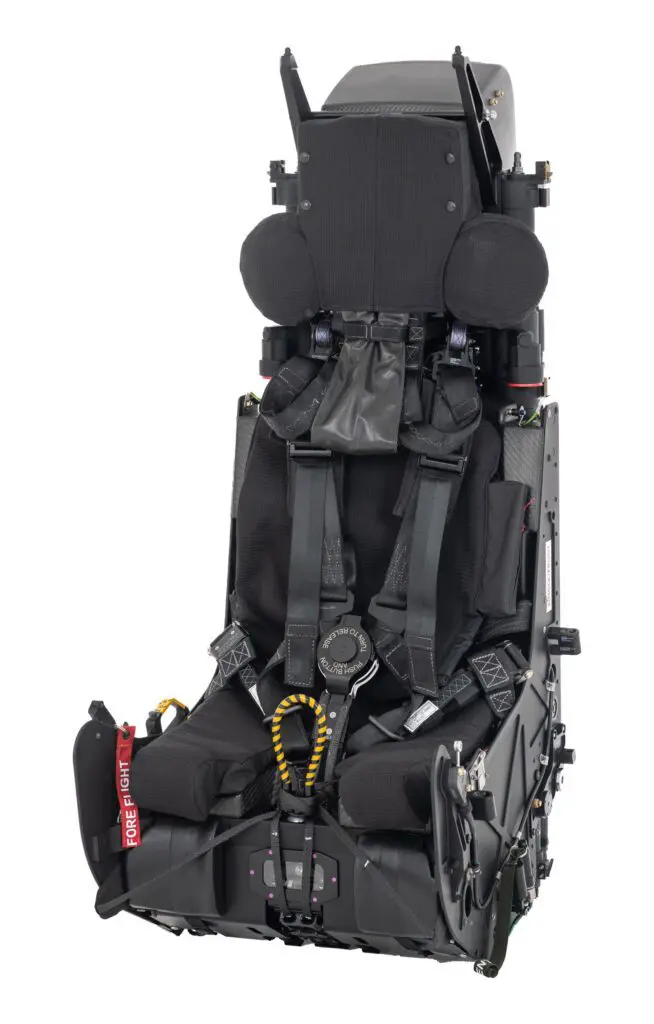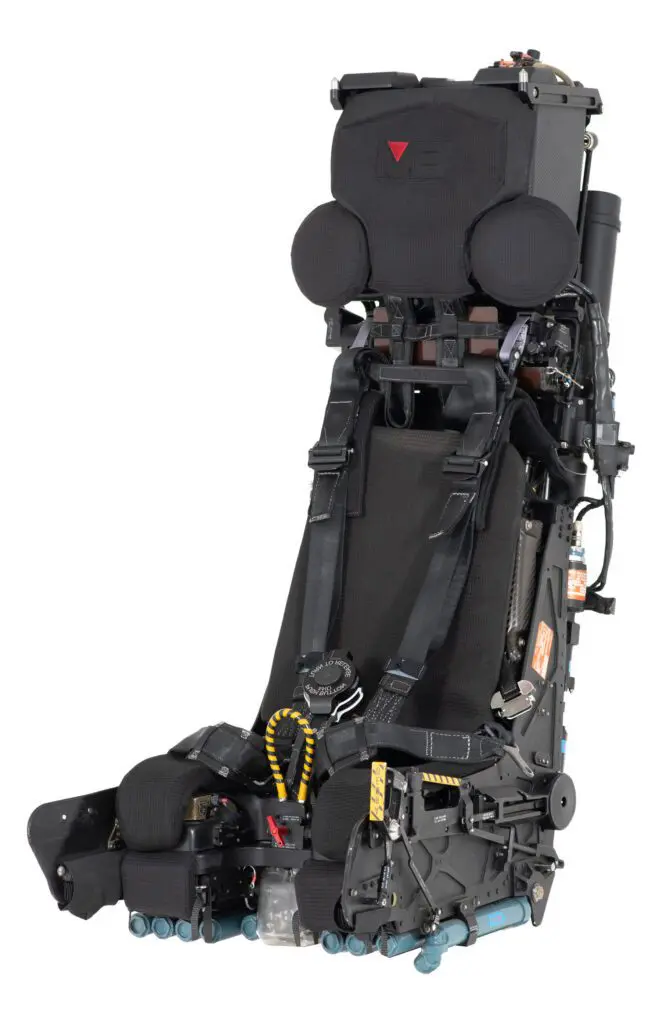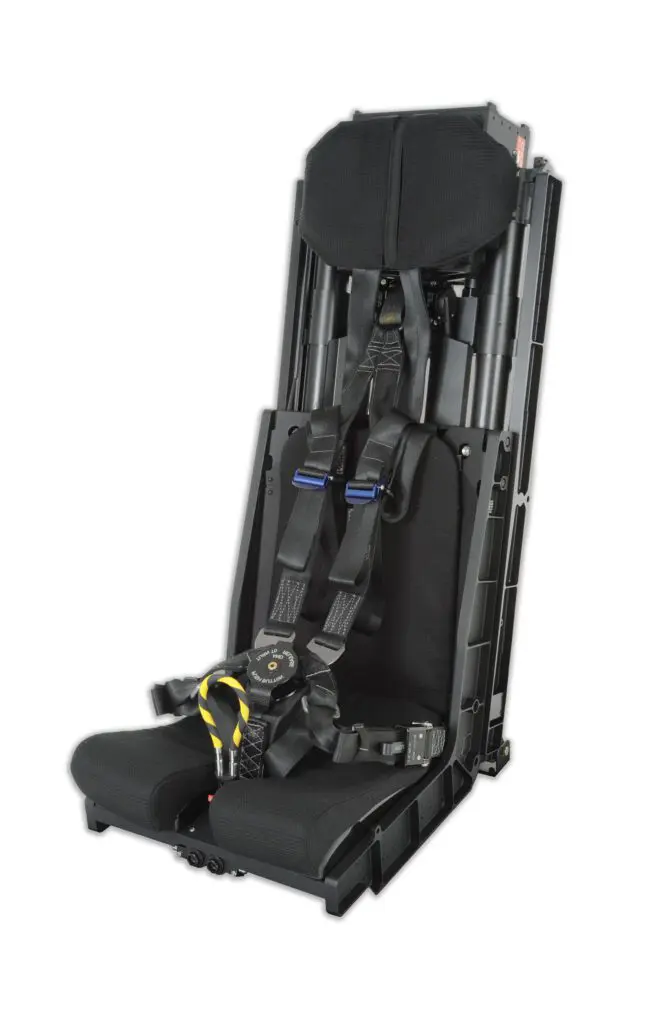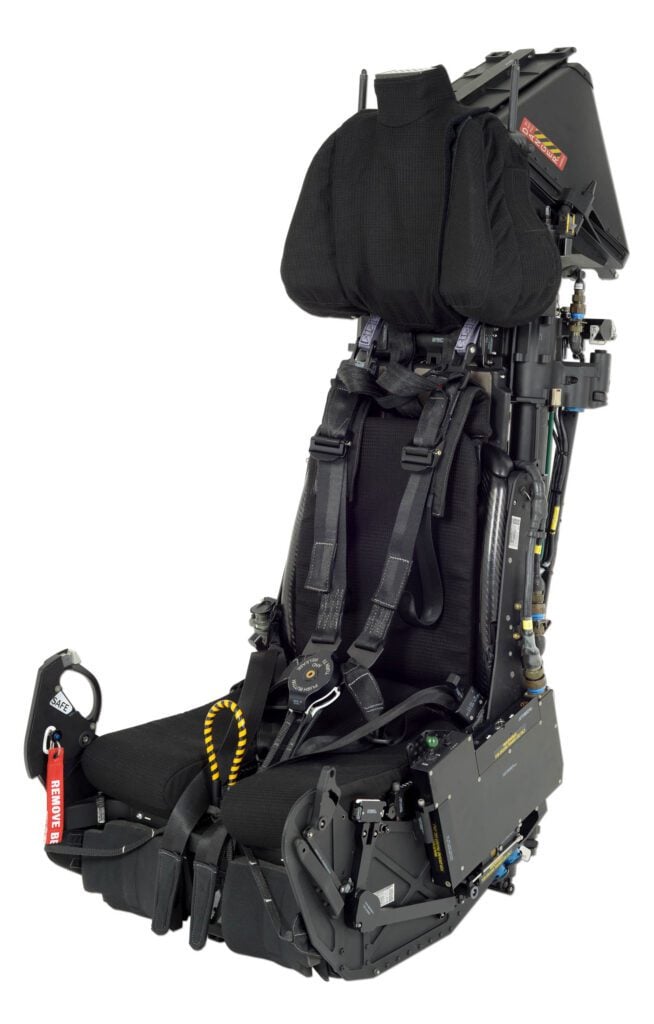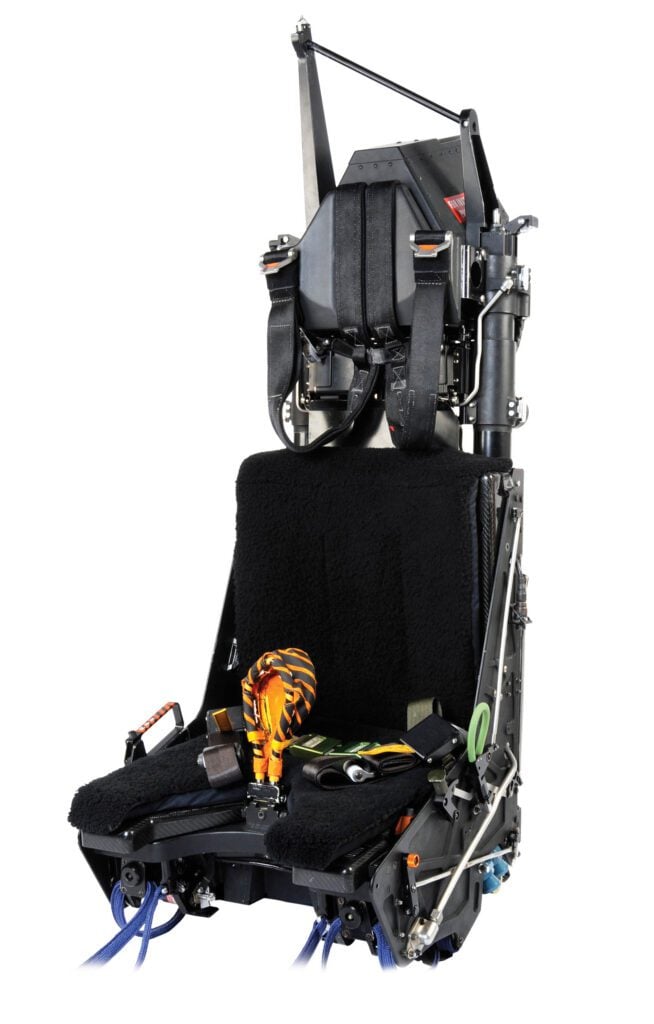What We Do
MK2 Ejection seat
Upgrading the Mk1 to automatic operation

MK2
First Mk2 ejection was on 15th July 1952
332 lives saved
Experience with the manually operated seats had shown that a number of fatalities had occurred, due to unconsciousness after ejection, inaction due to circumstantial stress, or lack of time to carry out the necessary manual operations when ejecting at low altitudes. Accordingly, effort was concentrated on producing a simple, yet effective, fully automatic ejection seat, capable of being produced in quantity, reliable in service, and designed to permit the retrospective conversion of most of the existing manually operated seats already installed in service aircraft.
In the design of the first automatic seat, it was decided to house the personal parachute in a container in the back of the seat and the dinghy pack in the seat pan, to facilitate the use of the drogue to effect deployment of the parachute. It was also necessary to devise some means of disconnecting the drogue from the seat at the correct time and transferring its pull to the parachute, and simultaneously a means of releasing the occupant complete with his parachute and dinghy pack from the seat.
On the Mk1 seats, the drogue had been attached to the top of the seat by a solid shackle. This was now replaced by a “Scissor Shackle”, capable of being opened automatically at a pre-determined time.
| Operating ceiling | Unknown |
| Minimum height/speed | Unknown |
| Crew boarding mass range | 70.4 to 101.7kg |
| Crew size range | 5th to 95th percentile |
| Maximum speed for ejection | 400+KIAS |
| Parachute type | Irvin I 24 |
| Parachute deployment | Automatic |
| Drogue parachute type | 24 in. Later versions 22 in. Controller drogue and 5ft stabiliser drogue |
| Drogue deployment | Drogue gun. Initiated by 1 sec clockwork time-delay, tripped by short static line harness type 1 to 4 ejection seat operation type |
| Ejection gun | Ejection gun; Early version – two cartridge, 60 ft/sec; Later versions – 50 ft/sec Later versions – 80 ft/sec |
| Ejection initiation | Face screen firing |
| Barostatic time-release unit | Yes |
| Manual override handle | No, but provision for manual separation |
| Timers | Time-release unit for man/seat separation |
| Seat adjustment | Up/Down |
| Arm restraints | No |
| Leg restraints | Integral thigh guards and foot rests |
| Oxygen supply | Bottled oxygen |
| Personal survival pack | Liferaft pack |
| Aircrew services | No |
| Command ejection | No |



